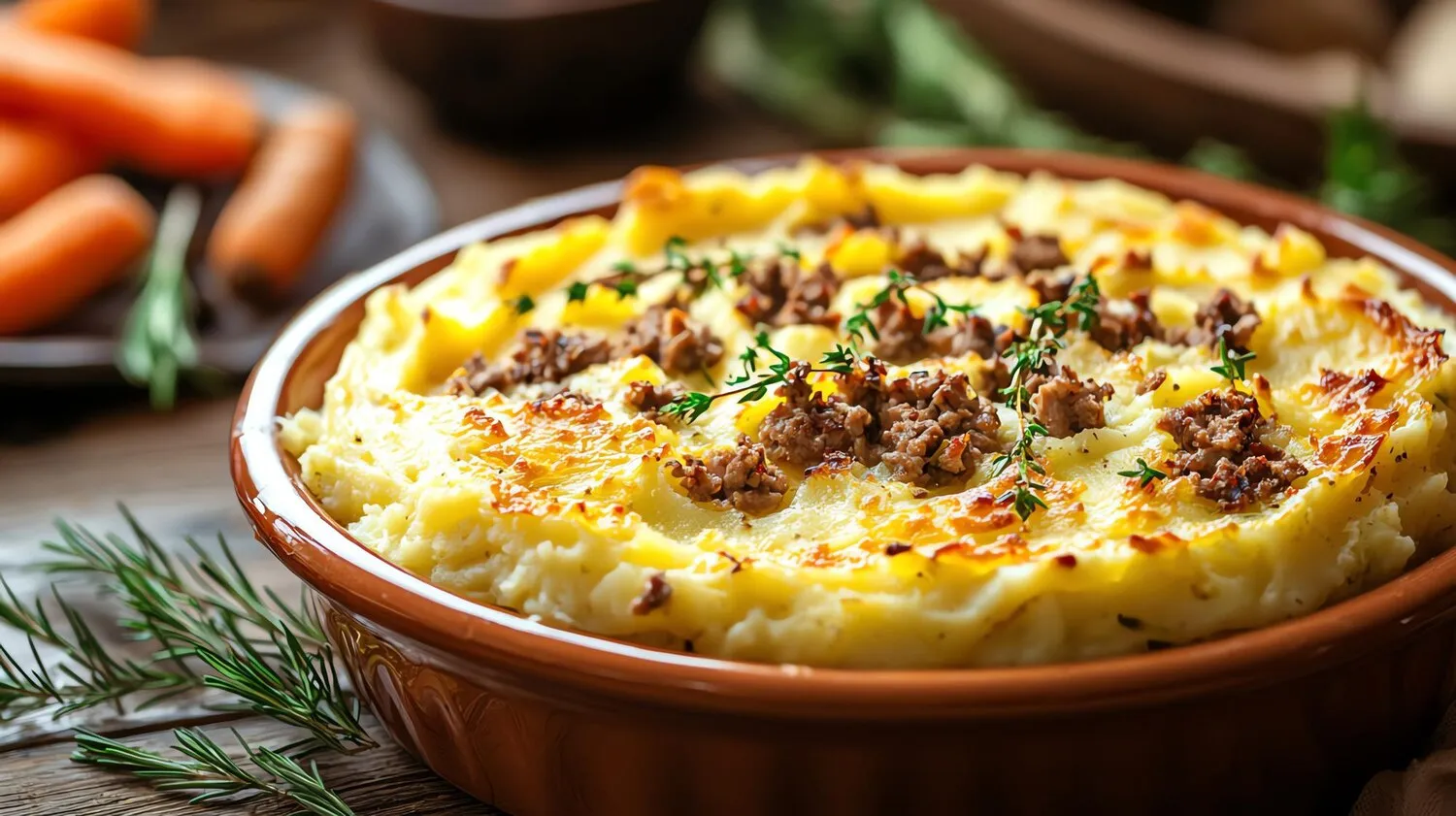
Escondidinho de Carne Seca
Mashed cassava layered with shredded dried beef, topped with cheese.
Nutrition Facts
* The % Daily Value (DV) tells you how much a nutrient in a serving of food contributes to a daily diet. 2,000 calories a day is used for general nutrition advice.
Cia do Rango
Escondidinho's origins are somewhat humble and practical, reflecting the need to preserve and utilize ingredients effectively. Carne seca (dried beef) emerged as a preservation method in the arid Sertão region of Brazil, allowing for meat to be stored for extended periods. Cassava, a staple root vegetable in Brazil, provided a readily available source of carbohydrates. The combination of these ingredients likely evolved organically within Brazilian households, with variations emerging based on regional preferences and available resources.
Escondidinho is a comfort food deeply embedded in Brazilian culture, often associated with family gatherings and home-style cooking.
Regional Variations
While the basic concept remains the same, variations exist across different regions of Brazil. Some variations include the addition of requeijão (a creamy cheese spread) to the cassava purée, or the use of different types of cheese for the topping. The seasoning of the carne seca can also vary, with some regions preferring a spicier flavor profile.
Celebratory Meals
Escondidinho is often served during special occasions and family gatherings, reflecting its status as a cherished comfort food.
Hearty and Filling
Reflecting its origins as a rural dish, escondidinho is known to be hearty and filling making it a satisfying meal.
Escondidinho de Carne Seca offers a delightful combination of savory, creamy, and slightly sweet flavors.
The carne seca provides a deeply savory and salty base, often balanced with aromatics like onions, garlic, and peppers. The mashed cassava, or purê de mandioca, contributes a creamy and slightly sweet counterpoint. The cheese topping, typically queijo coalho or another melting cheese, adds a rich and salty layer that complements the other flavors.
Hydrating the Carne Seca
Properly hydrating and desalting the carne seca is crucial. Soaking it in water, changing the water several times, helps remove excess salt. This process can take several hours, or even overnight, depending on the saltiness of the meat.
Mashing the Cassava
For a smooth and creamy purée, ensure the cassava is cooked until very tender. Use a potato ricer or food mill for the best texture. Adding a touch of butter, milk, or cream enhances the flavor and creaminess.
Choosing the Cheese
Queijo coalho is a traditional choice, but other melting cheeses like mozzarella or provolone can also be used. Choose a cheese that melts well and has a good flavor.
Browning the Cheese
Broiling the assembled escondidinho briefly at the end creates a golden brown, bubbly cheese topping, adding texture and flavor.
Explore additional Regional Brazilian dishes and restaurants
Explore Regional BrazilianDiscover top dining spots and culinary experiences in Feira de Santana.
Explore Feira de SantanaLearn more about the food culture, restaurant scene, and culinary heritage of Brazil.
Explore Brazil